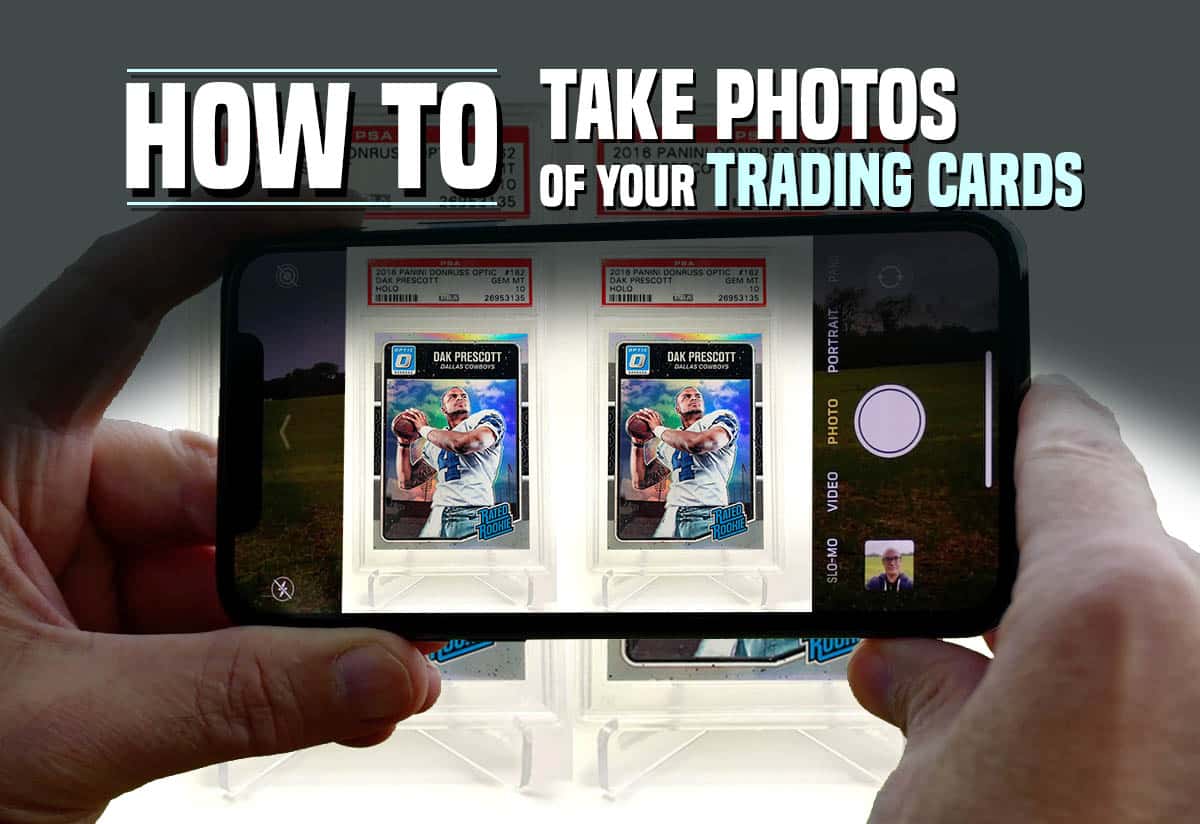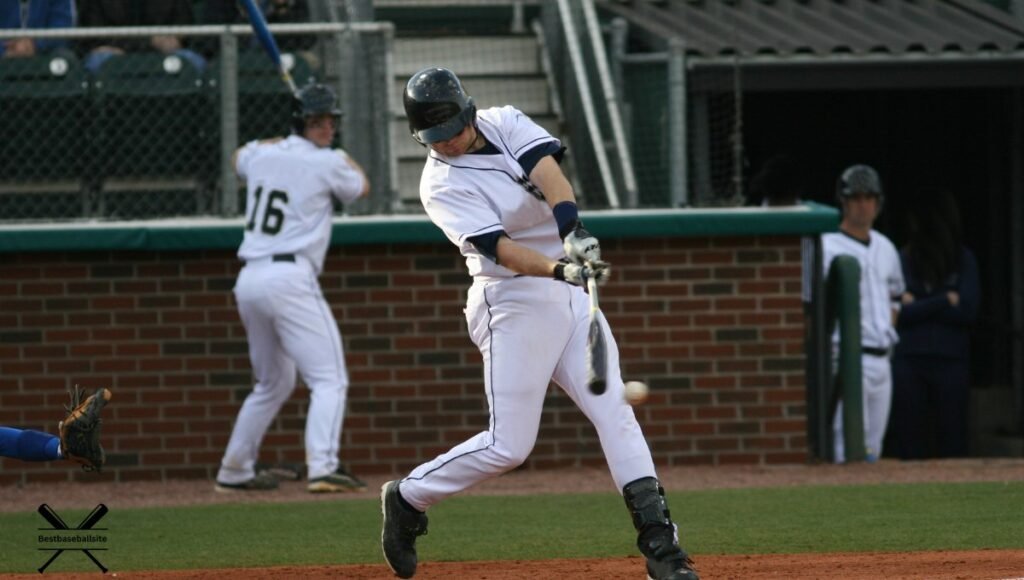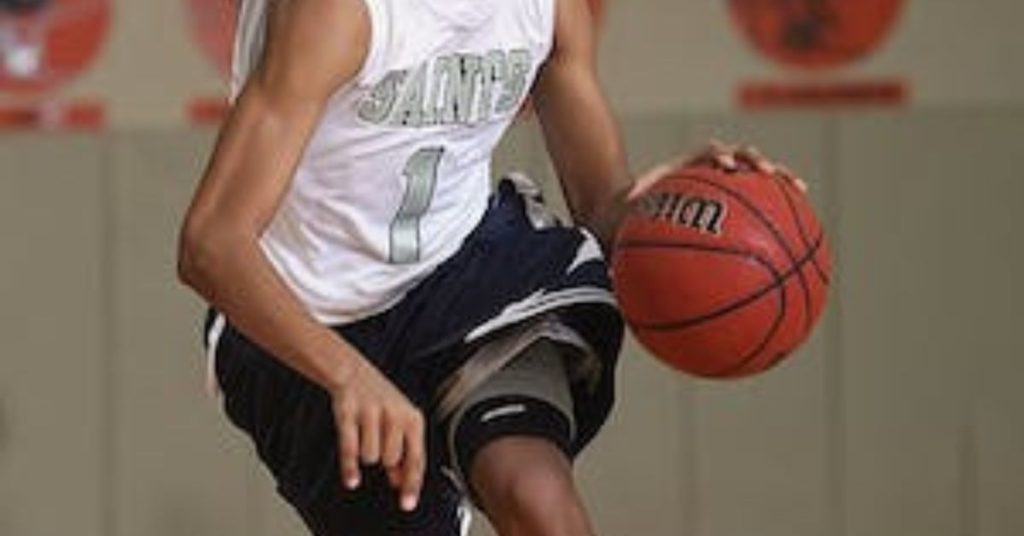To capture the best images of baseball cards, use natural light and a steady backdrop. Avoid glare by angling the cards slightly.
Collectors and sellers know the value of a well-presented baseball card. Good photography can highlight a card’s condition and detail, essential for assessing its worth. Whether listing cards online or cataloging a personal collection, taking quality pictures is crucial. A clear, focused photo can convey the texture, color, and authenticity, drawing the attention of potential buyers or serving as a reliable reference for enthusiasts.
As we proceed, we’ll discuss tips and techniques to ensure your baseball card images stand out for all the right reasons.
Crafting The Perfect Setup
Crafting the Perfect Setup for photographing baseball cards is essential. With the right setup, your cards will shine, showcasing their detail and condition. This guide will help you establish an optimal environment for taking stunning pictures of your baseball card collection.
Choosing The Right Lighting
Lighting makes all the difference. You want clear, natural light without harsh shadows. Position your setup near a window with indirect sunlight. Consider using a softbox or LED panel to add additional, controlled light. The goal is to illuminate your card evenly, bringing out its true colors and preventing glare.
- Indirect sunlight near a window
- Diffused light from a softbox or LED panel
- Avoid direct light to prevent harsh shadows
Selecting The Ideal Background
Backgrounds matter as they can enhance your card’s appearance. Choose a background that is solid-colored and non-distracting. Neutral colors like white or gray work best. They let your card stand out without competing for attention.
| Color | Effect |
|---|---|
| White | Makes colors pop |
| Gray | Provides a neutral tone |
| Black | Adds depth |
For added stability and precision, place your card on a flat surface. Use a card stand if available. This keeps the card upright and focused. Ensure the card fills most of the frame for a bold, detailed image.
Essential Camera Gear
Essential Camera Gear is vital for capturing sharp, detailed images of baseball cards. Understanding the right equipment can make the process seamless and produce professional-looking photos.
Camera Types Suited For Card Photography
Diverse camera options are available, each offering unique benefits. Consider these cameras:
- DSLR Cameras: They provide high resolution and manual controls.
- Mirrorless Cameras: Offer similar features to DSLRs but are more compact.
- Compact Digital Cameras: Easy to use with automatic settings for quick shots.
- Smartphone Cameras: Convenient for a quick capture with improving camera technology.
Using Tripods For Stability
Tripods are crucial for stability and avoiding camera shake. Consider the following:
| Tripod Type | Benefits |
|---|---|
| Full-size Tripods | Durable and ideal for a stationary setup. |
| Tabletop Tripods | Compact and perfect for smaller spaces. |
| Flexible Tripods | Versatile and can grip onto various surfaces. |
Always ensure the camera is level for the best shot. Tripods with adjustable legs and heads work best for precise angling.
Lens And Focal Options
Choosing the right lens is crucial for taking the best pictures of baseball cards. The lens affects how much detail you capture. It can also influence the card’s texture and color. Below, we delve into the types of lenses that will help you get high-quality images of your baseball cards.
Macro Lenses For Detailed Shots
A macro lens lets you take close-up photos without losing quality. This lens captures details you can’t see with your eyes. Look for a macro lens that can focus from a short distance. This means you can fill the frame with your card, showcasing every aspect.
- Sharp Images: Macro lenses allow for edge-to-edge sharpness.
- True to Life Size: These lenses can reproduce small items at up to life-size on your camera sensor.
- Flat Field Focusing: They reduce the distortion that can make straight lines appear curved.
Benefits Of Prime Lenses
Prime lenses have a fixed focal length. This means you cannot zoom in and out. You have to move to frame your shot.
- Sharp Images: They are often sharper than zoom lenses because they have fewer elements inside.
- More Light: Prime lenses usually have wider apertures, allowing more light and faster shutter speeds.
- Cost-Effective: These are often less pricey than top-tier zoom lenses.
Mastering The Camera Settings
When capturing the fine details of baseball cards, camera settings are crucial. Bold important thoughts Properly adjusting your camera will bring out the vibrant colors and sharp details that make your cards stand out. Make paragraphs short and packed with information Let’s dive into optimizing ISO levels and finding the right balance between shutter speed and aperture to get the best shot.
Optimizing Iso Levels
ISO measures camera sensitivity to light. A good rule of thumb is to use the lowest ISO that allows for a clear, well-exposed photo.
| ISO Level | Light Condition | Usage |
|---|---|---|
| 100-200 | Bright sunlight | Best for outdoor shots in daylight |
| 400 | Indoor lighting | For well-lit rooms |
| 800+ | Low light | Necessary for dim or poor lighting |
Test various ISO levels and check the results to avoid grainy shots. Keep it simple and to the point
Balancing Shutter Speed And Aperture
Shutter speed controls how long the camera’s sensor is exposed to light, while aperture determines how much light passes through the lens. Bold to emphasize importance
- Start with a fast shutter speed to avoid blur.
- Adjust the aperture based on lighting and desired depth of field.
- For sharp card images, use a mid-range aperture like f/8.
- Ensure enough light or use a flash to compensate for faster shutter or smaller aperture.
Experiment with both settings in unison for the best exposure. Advice packed in a simple sentence
Focus Techniques
Great photos start with sharp focus. When shooting baseball cards, the details matter. A crisp, clear image makes all the difference. Let’s explore how to achieve that perfect shot!
Manual Vs. Autofocus
Manual focus allows full control over the shot. It’s great for macro shots of cards. Autofocus is quicker and easier. It helps when you need consistent sharpness across many photos. Your camera’s autofocus points play a big role. Use them to lock focus on the card’s details.
Beginners often prefer autofocus. It’s quick and efficient. Seasoned photographers might use manual focus. It offers precision and creativity.
Here’s a comparison:
| Manual Focus | Autofocus |
|---|---|
| Total control over focus | Fast and consistent |
| Ideal for close-up details | Good for bulk shooting |
| Requires patience and skill | Easy for beginners |
Depth Of Field Considerations
Depth of field (DoF) impacts your photo’s look. A shallow DoF blurs the background. It makes the card stand out. A large DoF keeps everything in focus. This can be good for showing condition.
Adjust aperture to control DoF. A low f-number gives a shallow DoF. Higher numbers increase the DoF. Use a tripod to avoid shake at high f-numbers.
Some tips for DoF:
- Use a large aperture (low f-number) for single cards
- Use a small aperture (high f-number) for multiple cards
- Focus on the card’s name or image for best effect
- Keep the camera level with the card for even focus

Credit: www.flytographer.com
Handling And Positioning Cards
When it comes to capturing the perfect shot of your baseball cards, proper handling and positioning are key. Ensuring the card is free from smudges and in the right spot can make all the difference. Keep the cards clean and hold them by the edges to avoid fingerprints. Let’s take a look at how to showcase your cards in their best light.
Avoiding Glare And Reflections
To capture the true colors and details of your baseball cards, avoiding glare is crucial. Here’s how:
- Use indirect light: No harsh lights should shine directly on the cards.
- Matte backgrounds: They help minimize reflections.
- Adjust card angle: Tilting slightly can reduce glare.
- Polarizing filter: For cameras, this accessory is a must.
Angle Tips For The Best Perspective
Choosing the right angle can bring your baseball cards to life. Follow these tips for the perfect perspective:
- Elevate your camera: Shoot from above for a full, flat view.
- Level up: Ensure the camera lens is parallel to the card.
- Close-ups: Capture details by zooming in on specific parts.
With these tips, your baseball cards will look professional and pristine in photos. Now, grab your camera, and let’s start shooting!
Lighting Tricks
Capturing the perfect shot of a baseball card is about knowing the right lighting tricks. Too much glare or shadow can hide the card’s detail. Let’s explore how to use light to get photos worthy of top collectors.
Softbox And Diffuser Usage
Softboxes and diffusers are your best friends for a soft, even glow. Soft light brings out every detail and color in your card. Here’s how to use them:
- Place your softbox close to the card, angled slightly.
- Use a diffuser to soften any harsh light from the softbox.
- Experiment with the angle to avoid unwanted reflections.
Natural Vs. Artificial Light
Choosing between natural and artificial light can make or break your image. Each has its benefits.
| Natural Light | Artificial Light |
|---|---|
|
|
For indoor shoots, artificial light will be more reliable. When outdoors, use natural light for its beauty. Remember, the right lighting highlights the value of your baseball card collection.
Post-processing Enhancements
Now you’ve snapped some great shots of your baseball cards, it’s time to make them pop. The right post-processing can turn good photos into great ones. Dive into these easy-to-follow steps to enhance your baseball card images like a pro.
Basic Photo Editing Techniques
Edit your photos to make them stand out. With basic editing, you can transform your images using simple tools.
- Crop: Focus on the card, remove distractions.
- Brightness and Contrast: Make your card shine.
- Saturation: Colors must pop, but remain true.
- Sharpness: Detailing is crucial for collectors.
Advanced Retouching For Clarity
Looking to take your baseball card photos to the next level? Advanced retouching is the answer. Make every detail crisp and clear with these techniques.
- Healing Brush: Remove scratches or dust spots.
- Adjust Levels: Refine the light and dark tones in the image.
- Curves Tool: Control highlights, shadows, and mid-tones.
- Dodge and Burn: Emphasize texture and form.
Remember to save your edits. Create a copy of the original photo before starting. This way, you always have a backup.
Digitization For Sharing
For baseball card collectors, digitizing your collection makes sharing your passion easy and fun. Whether showcasing your most prized cards or trading with friends online, digitizing cards preserves their physical state and extends their reach to the world. Let’s look at how you can ensure your digital images look just as great as the cards in your hand.
Resolution Tips For Online Display
High-resolution pictures make details pop on any screen. Here are some quick tips for capturing your baseball cards in the best light:
- Choose a camera with at least 12 megapixels for clear images.
- Set your camera to the highest resolution possible.
- Use natural lighting or a softbox to avoid glare and shadows.
- Always focus on the card’s details such as the player’s name and stats.
- Edit carefully to maintain authenticity while enhancing clarity.
Optimizing Images For Social Media
Sharing your collection on social media connects you with a global community. To get the best results:
- Resize images for each platform’s dimension requirements.
- Save images in .jpg or .png format for compatibility.
- Use compression tools to reduce file size without losing quality.
- Tag your photos with relevant keywords for baseball card enthusiasts.
Remember to keep the image file size under 5MB to ensure easy uploading and sharing.

Credit: gradedcardinvestor.com
Preservation Tips
Preservation tips are key to keeping baseball cards in mint condition. The perfect shot of your baseball card not only captures its beauty but also its value. Proper care doesn’t stop after the photoshoot; it extends to how you store and maintain your collection.
Storing Cards Post-shoot
Proper storage ensures your cards remain in top-notch condition. Protect your cards with the right supplies. Use sleeves and top loaders for individual protection. Place your sleeved cards in top loaders or rigid card holders. This prevents bending and keeps them secure.
- Sleeves: Slide your card gently into a penny sleeve.
- Top Loaders: Insert the sleeved card into a top loader for added rigidity.
- Storage Boxes: Store the top loaders in a card box, away from direct sunlight.
- Silica Gel Packs: Add these to boxes to control moisture.
Long-term Care For Card Collections
For lasting protection, consider the environment where you store your cards. Keep your collection in a cool, dry place. Extreme temperatures and humidity are harmful. Here’s a guide:
| Factor | Tip |
|---|---|
| Temperature | Keep between 50-70°F (10-21°C). |
| Humidity | Maintain at 50% or lower. |
| Light | Avoid UV rays. Use UV-protective casings. |
| Handling | Always have clean, dry hands. Use gloves for added protection. |
Additionally, consider insuring your collection, especially if it holds significant value. Regularly check your storage environment and adjust when needed. Taking these steps will ensure that the cards you so carefully photographed remain pristine for generations.

Credit: www.ebay.com
Frequently Asked Questions Of Best Way To Take Pictures Of Baseball Cards
How Do You Take Good Sports Cards Pictures?
Use natural lighting or a softbox to avoid glare on sports cards. Hold the camera steady, possibly with a tripod, for clear photos. Fill the frame with the card, ensuring it’s centered. Capture the card’s details at a high-resolution setting, and choose a neutral background for contrast.
Is There An App To Take A Picture Of Baseball Cards And Get Their Value?
Yes, the “CollX” app allows users to snap pictures of baseball cards to quickly estimate their current market value.
How Do You Take Pictures Of Cards Without Reflection?
To take pictures of cards without reflection, angle the camera to avoid direct light. Use a polarizing filter to cut glare. Soften the lighting around the card. Matte surfaces help reduce shine. Finally, adjust your camera’s exposure settings for balanced lighting.
Conclusion
Capturing the essence of your baseball card collection with stunning clarity boils down to mastering a few key techniques. Implementing the tips outlined will undoubtedly elevate your photo game. Remember, lighting, angles, and steadiness are your allies. With practice, your snapshots will not only preserve but enhance the value of your cherished memorabilia.
Share your passion through the lens, and let each picture tell its own story of baseball history.


